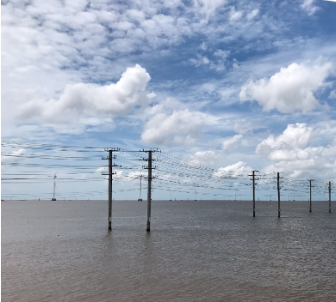
We are super happy that members and customers of GoClimate has supported yet another Gold Standard certified climate project, this time a wind project in Vietnam.
The renewable energy revolution is ongoing, but we need more speed and scale to be able to stop climate change in time. Finance to projects like this makes it more financially attractive to build renewable energy instead of increasing fossil fuel use. This is exactly the type of initiative that takes us to the path of stopping climate change.
Thank you everyone that contriubuted!
The project
Vietnam’s reliance on fossil fuels for electricity is being challenged by renewable projects like the Wind Power Plant Thanh Hai. Located in Thanh Hai commune, Thanh Phu district, Ben Tre province, this offshore wind farm has a total capacity of 110 MW and an annual electricity output of 356.95 GWh.

Project Overview: Thanh Hai Wind Power Plant
Location: Viet Nam
Type: Wind Power
Certification: Gold Standard
Certified Sustainable Development Goals
7. Affordable and Clean Energy
The project generates clean energy, reducing reliance on fossil fuels.
8. Decent Work and Economic Growth
Creation of jobs and boosting the local economy.
13. Climate Action
Significant reduction in greenhouse gas emissions.
The Solution
The Thanh Hai Wind Power Plant involves constructing an offshore wind farm with turbines of 4.25-4.5 MW capacity each, installed in four phases. The generated electricity is exported to the national grid, enhancing Vietnam’s renewable energy infrastructure.
The Impact
- Environmental Benefits: With a gross annual electricity output of 356.95 GWh, the project substantially cuts down greenhouse gas emissions by reducing dependence on fossil fuels.
- Economic Growth: The project supports local economies through job creation and infrastructure development.
- Sustainable Development: By generating affordable and clean energy, the project aligns with global sustainability goals and sets a precedent for future renewable projects in the region.
Supported by Gold Standard certification, the Thanh Hai Wind Power Project is a step towards a sustainable energy future for Vietnam.